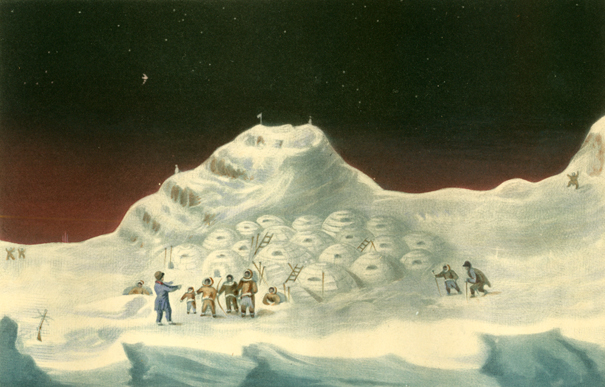“North Hendon. Snow Cottages of the Boothians” [Sir John Ross]

The village soon appeared, consisting of twelve snow huts, erected at the bottom of a little bight on the shore, about two miles and a half from the ship. They had the appearance of inverted basins, and were placed without any order; each of them having a long crooked appendage, in which was the passage, at the entrance of which were the women, with the female children and infants. We were soon invited to visit these, for whom we had prepared presents of glass beads and needles; a distribution of which soon drove away the timidity which they had displayed at our first appearance. . . . Of these huts, built entirely of snow, I must add, that they were all lighted by a large oval piece of clear ice, fixed about halfway up on the eastern side of the roof; while the variations among the different ones that we inspected were trifling. But we also saw afterwards, what had escaped us before where was so little light to discern any thing, that about the middle of each passage was an antechamber leading into a recess for the dogs. It was obvious, too, that the external aperture could be turned at any time, so as always to be on the lee side, and thus prevent the wind from entering. We found that these huts had been just erected: they were scarcely a day old; so that the architectural processes of this country did not occupy much time. [Ross, pp. 249, 250-251.]